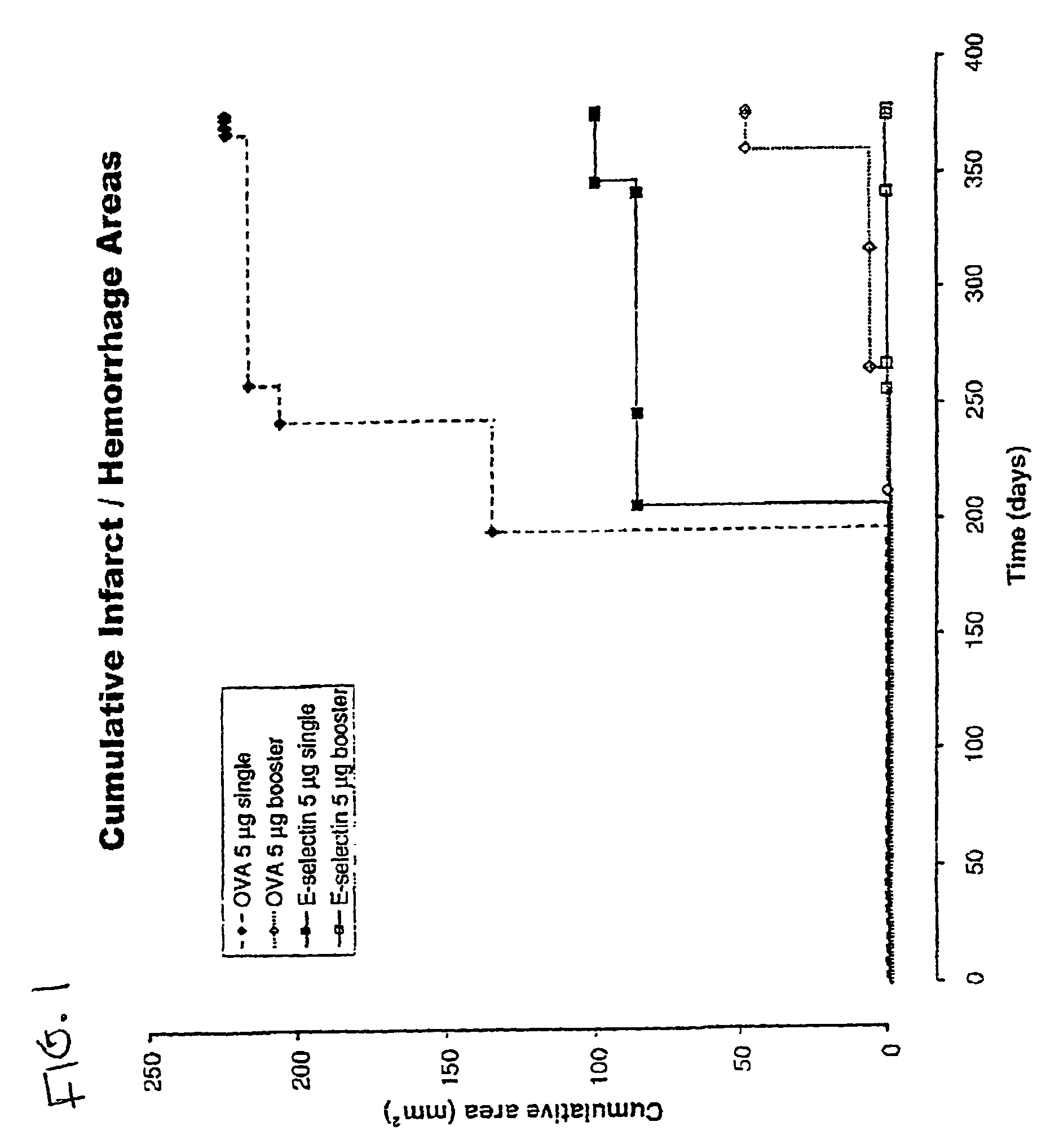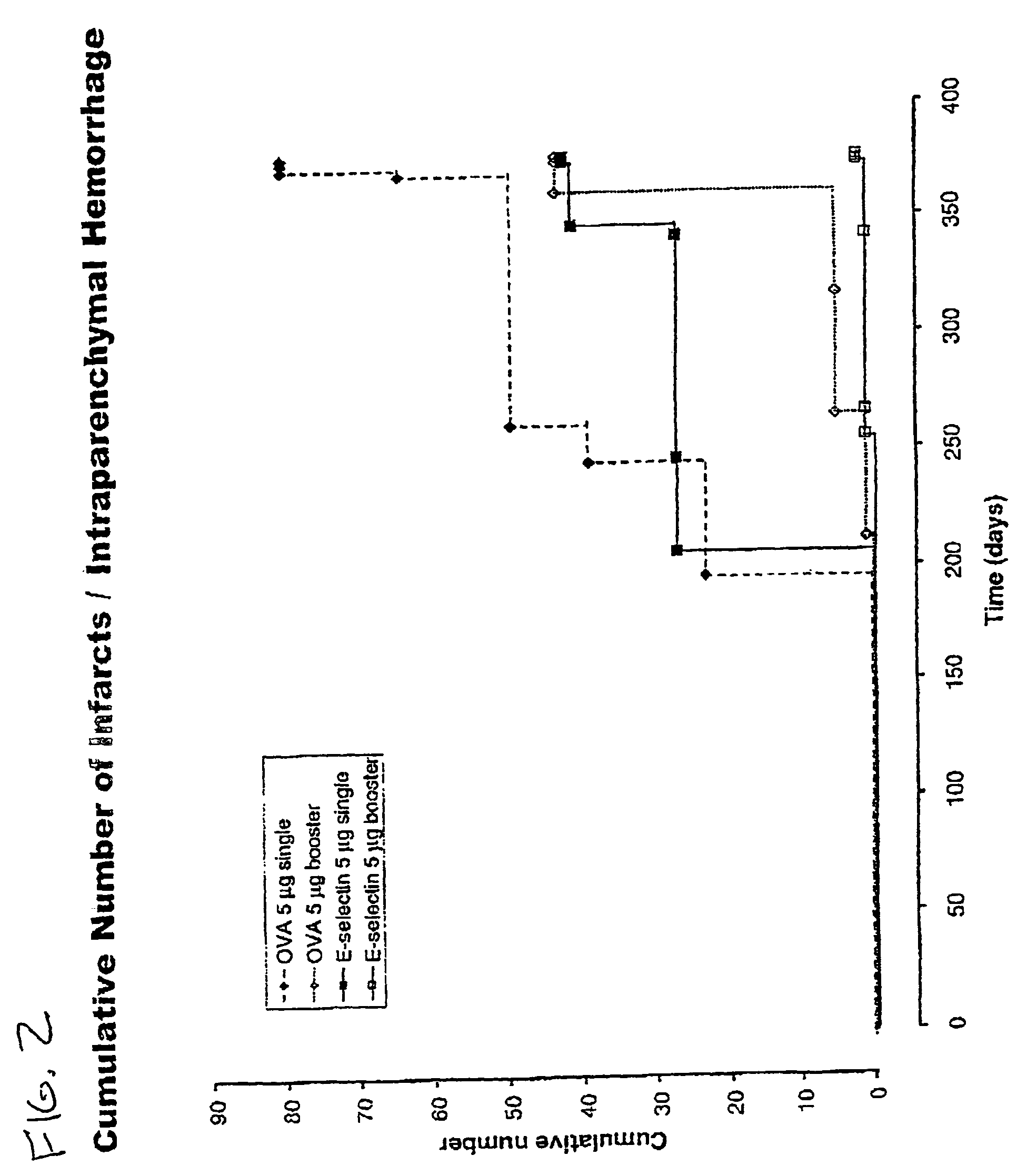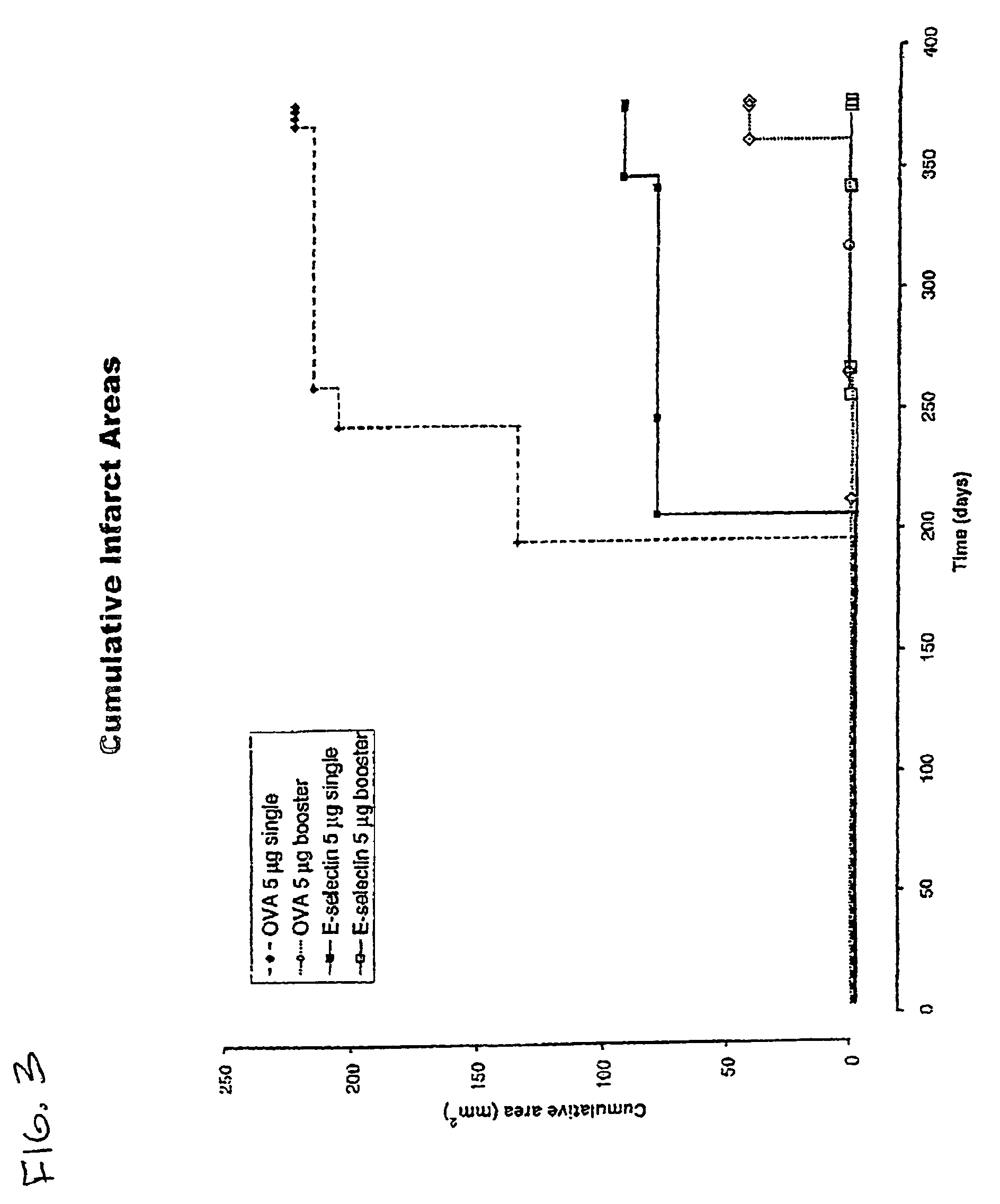Methods for preventing strokes by inducing tolerance to e-selectin
- Summary
- Abstract
- Description
- Claims
- Application Information
AI Technical Summary
Benefits of technology
Problems solved by technology
Method used
Image
Examples
example 1
[0053]Reduction of brain infarcts by administration of E-selectin. The effects of administration of E-selectin on infarcts of the brains of stroke-prone rats was analyzed. Male and female stroke-prone and spontaneously hypertensive (SHR-SP) 8-10 week-old rats were obtained from the NIH colony. (Okamoto (1974)). At 11 weeks of age, E-selectin-(soluble human E-selectin: human E-selectin lectin, EGF, CR1, CR2 domains, myc peptide tail) ovalbumin or vehicle (PBS) were administered intranasally. Purified human E-selectin was obtained from Protein Design Laboratories (Fremont, Calif.).
[0054]E-selectin and control preparations were administered in the following manner: SHR-SP rats were divided into three groups: (1) a saline (PBS) control group, (2) an E-selectin administration group (ES group), and (3) an ovalbumin (OVA) administration group (OVA group). In addition, ES and OVA groups were divided into single (non-booster) and repetitive (booster) administration groups. For the control gr...
example 2
[0063]Induction of tolerance to E-selectin. An analysis was performed to determine whether tolerance to E-selectin was induced by the intranasal administration protocol of E-selectin described above, which resulted in decreased stroke-related tissue damage. For this analysis, either E-selectin or control PBS preparations were administered to rats as described in Example 1 for the non-booster groups. Delayed-type hypersensitivity (DTH) was analyzed by injecting 5 μg of E-selectin in 50 μl of PBS and 50 μl of complete Freund's adjuvant into hindpads (s.q.) 14 days after intranasal administration. Fourteen days later, the rats were rechallenged by injecting 5 μg E-selectin in 50 μl PBS into the ear and ear thickness was measured with microcalipers (Mitsutoyo) 48 hours later.
[0064]Results of the delayed-type hypersensitivity assay demonstrated that intranasal instillation of human E-selectin induced tolerance. Administration of E-selectin intranasally prior to footpad injection and elic...
PUM
| Property | Measurement | Unit |
|---|---|---|
| Time | aaaaa | aaaaa |
| Volume | aaaaa | aaaaa |
| Volume | aaaaa | aaaaa |
Abstract
Description
Claims
Application Information
 Login to View More
Login to View More - R&D
- Intellectual Property
- Life Sciences
- Materials
- Tech Scout
- Unparalleled Data Quality
- Higher Quality Content
- 60% Fewer Hallucinations
Browse by: Latest US Patents, China's latest patents, Technical Efficacy Thesaurus, Application Domain, Technology Topic, Popular Technical Reports.
© 2025 PatSnap. All rights reserved.Legal|Privacy policy|Modern Slavery Act Transparency Statement|Sitemap|About US| Contact US: help@patsnap.com



